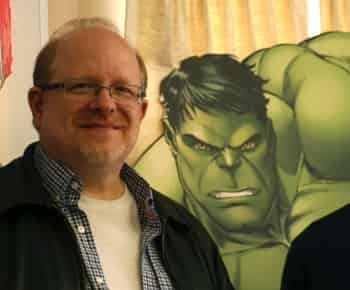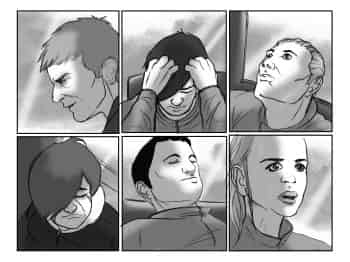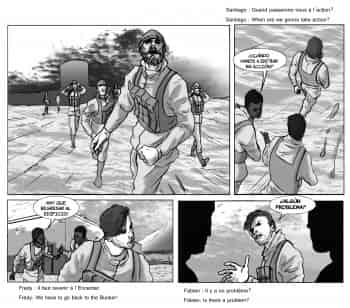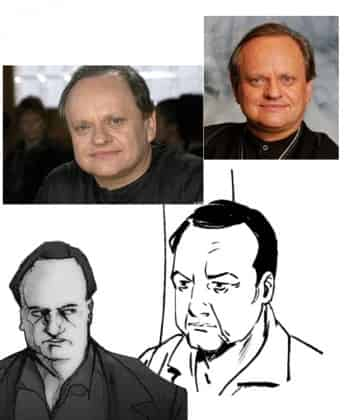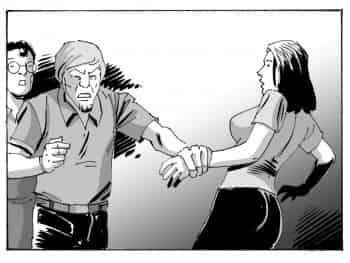Bonus
-
Reacting to external events
Our admiration for Mark Waid knows no bounds. We like the analysis he gives his own work. In an interview, he said this sentence, which we find very important: “I love the new directions of your Marvel books. Both Bruce Banner and Matt Murdock have fresh “onwards and upwards” attitudes. They’re deciding to change, whereas most of the time superheroes are more reacting to external events.” Reacting to events. He gives an example:
I think you see very clearly in Daredevil that depression is inertia. What fuels depression is that sense of helplessness, that sense of not knowing what to do next, that image of sitting on a gargoyle in the rain on the rooftop, frozen by inaction. To me, Daredevil come to grips with that and is actively pushing past. I wrote a scene where he feels that paralysis that comes with depression and he pushes through it. He makes an active decision to move forward. Any movement is better than no movement at all. (“Interview: Mark Waid on the Inner Demons of Daredevil, Attitude Adjustment for the Hulk, and the Thrill of Digital Comics,” www.comicsbeat.com, February 10, 2014).
Similarly, Greg Rucka, in talking about his work on Batman and on the death of Sarah Essen, said that “this death has to mean something.” (Chris Sims, “Born in a World Of Tragedy: Greg Rucka Reflects on His Batman Work, Part One,” www.comicsalliance.com, September 17, 2014). And when we look at the title of the article this quote is taken from, we realize that characters can experience tragedies—events over which they have no control—but at the same time, these same events must have some significance.
Heroes must take their destiny in hand, and at the same time, can’t be indifferent to the tragedies they see around them. At the end of the story “Counteroffensive,” Benson and his team return to the Bunker. They had been close to twenty when they left, and now are just a half-dozen. Did they win or were they slaughtered? Jenny has lost her brother, Liane is traumatized by the brutality of combat, and Benson must bear the weight of his decisions. They need to think about and absorb the consequences of their actions and those of others. This reflection process must lead to the upcoming events. That’s how we see heroes controlling their destiny.
-
What Are They Saying? “Conflagration”
-
Where does that character come from? The example of Blascovitch
-
Filling gaps
In a previous post, we posited that writers shouldn’t leave readers in the lurch about secondary events, but in the same breath, we admitted that writers can’t always know what’s coming up, plot-wise. We think our webcomic allows us to fill in some of these gaps. First, because our universe is separated into four storylines, we can handle several subplots at the same time. Then, by approaching them from different time periods, these subplots achieve their own pace. And lastly, because some storylines are not published chronologically, we can adjust as we go along to fill any plot holes that may appear.
For example, we had established that Gypsie and Tucker hated each other. This animosity drove Gypsie to discover Travis’ secrets. But once Gypsie got the Bunker, there had to be a period of time where these characters were bumping into one another. We hadn’t anticipated that. So in September 2015, we finally published a story showing one of these encounters, allowing us to fill in a plot gap. Also, since were writing the story anyway, why not suggest that something else may have intervened in Tucker’s destiny…
-
What’s a digital comic?
To answer this question, we again turn to the words of Mark Waid, who here explains what a digital comic is not:
Waid immediately jumped in, saying they aren’t cheap animation and that “motion comics are the devil’s tools.” His follow-up points demonstrated a thoughtful approach. He thinks that what makes comics is the reader’s ability to determine the pace of the story. The ability for the reader to fill in the voices and what happens in the gutters, using imagination, makes comics an immersive medium. (“C2E2: Digital Comics: The Next Page,” www. comicsbeat.com, April 29, 2014).
At the same time, some analysts say it’s harder to lose money with digital than with paper editions (Janelle Asselin, “The Economics of Digital Comics: Journalist And Educator Todd Allen On His Important New Book,” www.comicsalliance.com, July 15, 2014). We would qualify this statement a little. If you do everything from A to Z, we’ll grant that a digital comic book is cheaper to produce. But what shape will you give your digital version? If you just copy existing architecture, sure, you’ll save money. But competition in the digital world is stiff and works on two levels (in our view): 1) We feel the digital architecture must differentiate itself in various ways to take full advantage of the Internet’s potential. 2) The Internet requires a rate of posting that can capture and maintain the reader’s interest. Both of these demands require an investment.



